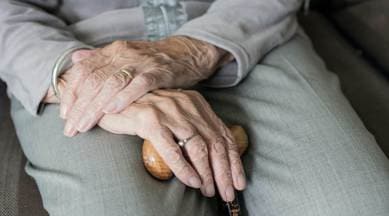📣 For more lifestyle news, click here to join our WhatsApp Channel and also follow us on Instagram
How to balance sodium-potassium levels in the elderly
It is always important to correct low sodium and potassium level concentration even in asymptomatic elderly individuals because it is directly related to increased mortality and morbidity, says Dr Suranjit Chatterjee, Senior Consultant, Internal Medicine, Indraprastha Apollo Hospital

India’s elderly population is expected to rise by 41 per cent and touch 194 million in 2031. Ageing comes with several degenerative changes in several organs and kidneys. After the age of 40, Hypernatremia or a rise in serum sodium concentration, Hyponatremia or a situation where the concentration of sodium in the blood is low and Hypo/Hyperkalemia, meaning low/high level potassium, are the most common electrolyte abnormalities found in the elderly.
Potassium is essential for good health as it regulates body fluids and helps muscles and nerves to work properly. While under normal healthy conditions, the elderly are able to maintain water and electrolyte balance in their bodies, it is usually affected by factors such as severe illness, decline in cognitive abilities or effects of certain medicines. It is always important to be sound about the potential electrolyte imbalances, especially in the elderly that can arise due to various outcomes.
monthly limit of free stories.
with an Express account.
Foods are the major source of electrolytes and the prime role of the kidney and liver is to maintain a healthy electrolyte balance. Very low or high electrolyte balance can lead to dysfunctions in both the liver and kidney. Electrolytes found in the human body are sodium, potassium, calcium and magnesium among others and one needs to maintain the levels through constant monitoring.
Why is an electrolyte — sodium and potassium — balance important for the elderly?
There are several reasons why senior citizens are more prone to dehydration and electrolyte imbalance than younger adults. Multiple medications lead to change in electrolyte levels. Then a lack of appetite in the elderly leads to insufficient intake of water or food. Sometimes they go through high levels of dehydration and may need help to ensure that they are eating and drinking enough.
Common signs of dehydration in the elderly
1) Dryness in the mouth
2) Low blood pressure
3) Drowsiness
4) Dizziness
5) Confusion/ Disorientation
These signs may aggravate medical conditions in the elderly if not monitored constantly.
What should be the optimal sodium and potassium levels in adults?
Sodium: 136–145 mEq/l
Potassium: 3.5–5.0 mEq/l
What causes a sodium and potassium imbalance in the elderly?
In both cases, when elders suffer from dehydration or there is too much water in the body, an electrolyte imbalance can occur. They occur mostly due to:
1) Constant vomitting
2) Diarrhoea
3) Kidney/Liver Dysfunction
4) Cancer Treatment
5) Certain drugs such as laxatives and diuretics
6) Cognitive issues among others
The treatment
It is always important to correct low sodium and potassium level concentrations even in “asymptomatic elderly individuals” because it is directly related to increased mortality and morbidity.
Treatment becomes even more important in situations where these disorders could be attributed to decreased sodium/ potassium concentration. Saline solution/extra salt is commonly used in acute symptomatic hyponatremia to increase serum sodium levels and prevent severe neurological symptoms such as seizures. For potassium insufficiency, we recommend potassium supplements under medical supervision. Electrolyte dysfunction or decreased sodium or potassium levels are common findings among the elderly. The evaluation and treatment of these in people of a certain age can cause several complications. Therefore, it is always important to constantly monitor the levels and go for regular check-ups.
📣 For more lifestyle news, click here to join our WhatsApp Channel and also follow us on Instagram